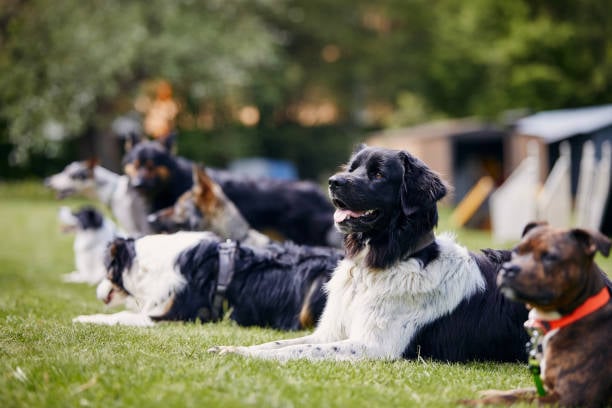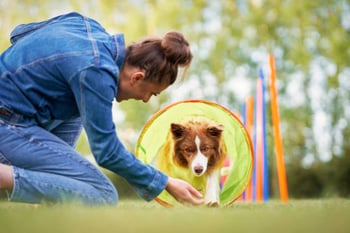The art of dog training has evolved significantly over the years, with an increasing emphasis on humane, effective methods that foster a positive relationship between the trainer and the canine. Among these modern techniques, positive reinforcement has emerged as a cornerstone, celebrated for its ability to encourage good behavior through rewards rather than punishment. This blog post guides dog trainers on effectively incorporating positive reinforcement into their training regimes to achieve the best outcomes for both dogs and pet parents.
Understanding Positive Reinforcement

Positive reinforcement is a principle of behavior modification that involves rewarding the behavior you want to see repeated. In dog training, this means immediately rewarding a dog for a desired behavior with something they find valuable, such as treats, praise, toys, or playtime. This reward makes it more likely that the dog will repeat the behavior.
The Benefits of Positive Reinforcement
The advantages of using positive reinforcement in dog training are huge. It strengthens the bond between the trainer and the dog and enhances the dog's confidence and willingness to learn. Unlike aversive methods, positive reinforcement is not associated with fear, pain, or aggression, leading to a happier, more cooperative dog.
Implementing Positive Reinforcement in Training Sessions
Sessions
-
Identify Motivators: Understanding what your dog values most is crucial. While treats are a common reward, not all dogs are food-motivated. Some may prefer toys, praise, or physical affection. Experiment to find out what excites your trainee the most.
-
Timing is Key: The effectiveness of positive reinforcement heavily relies on timing. The reward must be given immediately after the desired behavior to help the dog connect the action and the reward.
-
Be Consistent: Consistency in rewarding desired behaviors is essential. Inconsistent rewards can confuse the dog and slow down the learning process. Ensure that everyone involved in the dog's training and care is on the same page regarding the behaviors being encouraged.
-
Keep Training Sessions Short and Sweet: Dogs have relatively short attention spans. Training sessions should be kept short—about 5 to 15 minutes—to keep them engaged and prevent frustration for the trainer and the dog.
-
Gradually Phase Out Treats: While treats are a powerful motivator, the goal is for the dog to perform behaviors without needing a food reward every time. Gradually replace food rewards with verbal praise or a favorite toy to encourage the dog to perform the behavior without expecting a treat.
-
Incorporate Training into Daily Life: Training shouldn't be limited to designated sessions. Incorporate positive reinforcement into your daily routine by rewarding good behavior whenever it occurs. This helps reinforce learning and ensures good behavior is practiced in various settings.
Challenges and Considerations
While positive reinforcement is a powerful tool, it has challenges. Over-reliance on treats can lead to weight gain, so it's important to use small, low-calorie treats and account for this extra intake in the dog's diet. Additionally, some behaviors may be deeply ingrained or influenced by factors outside the trainer's control, such as genetic predisposition or past trauma, requiring patience and possibly the guidance of a professional behaviorist.
Positive reinforcement is a testament to the power of kindness and understanding in dog training. By rewarding desired behaviors, trainers can build a strong, positive relationship with their canine counterparts, leading to happier dogs and more satisfied owners. As we continue to learn and grow in our understanding of canine behavior, incorporating positive reinforcement in training practices shines as a beacon of progress and compassion in dog training.
Start a free trial with Revelation Pets to see how much easier managing your pet-care business can be.






